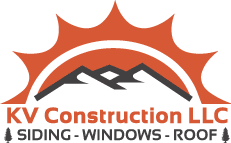Dry rot is a wood-decaying fungus that poses a significant threat to wooden structures, reducing them to a weakened state through a process that involves the wood becoming brittle, shrinking, and eventually crumbling. The key to effective dry rot management and restoration lies in early detection, accurate assessment, and professional intervention. In this guide, we will explore how to identify, prevent, and address dry rot, ensuring the longevity and integrity of your home’s wooden components.
Recognizing the Signs of Dry Rot
The initial step in tackling dry rot is to recognize its presence early. Here are the signs that might indicate the onset of dry rot in wood:
- Discoloration and Darkening: Wood affected by dry rot often shows signs of darkening compared to unaffected areas.
- Texture Changes: As the integrity of the wood is compromised, it may display a spongy texture and may easily crumble when touched.
- Fungal Growth: The presence of a silvery-grey or white fungal sheen, along with hyphae resembling cobwebs or cotton wool, is a clear indicator of dry rot.
- Musty Smell: A damp, musty odor is often associated with areas affected by dry rot.
- Structural Deformity: Wooden structures may show signs of warping or deformation, indicating the progression of decay.
Locating Dry Rot
Dry rot typically thrives in moist environments, making certain areas of your home more susceptible. Common locations include:
- Underneath Flooring: Especially in basements or areas with poor ventilation where moisture can accumulate.
- Window and Door Frames: Where condensation gathers or where frames are exposed to external moisture.
- Roofing and Attic Spaces: Improperly sealed roofing can allow moisture to seep in and affect the wooden structures.
- External Walls and Siding: Areas where water may accumulate due to damaged gutters or downspouts, particularly in homes like those managed by KV construction LLC in Everett, WA, which focus on siding services.
Preventative Measures Against Dry Rot
Preventing dry rot involves managing moisture levels in and around your home:
- Effective Ventilation: Ensure that crawl spaces, attics, and basements are well-ventilated to reduce moisture buildup.
- Regular Maintenance: Inspect and repair any leaks in roofing, plumbing, or exterior siding to prevent water ingress.
- Proper Sealing: Use quality sealants around windows, doors, and other entry points to keep moisture out.
Professional Dry Rot Repair and Removal
While minor dry rot can sometimes be handled through DIY efforts, significant infestations require professional attention. Professionals in dry rot repair can assess the extent of decay, remove affected wood safely, and treat the area to prevent recurrence. This includes:
- Removing Infected Wood: All decayed wood must be completely removed to prevent the spread of the fungus.
- Treating Surrounding Areas: Adjacent wood and materials should be treated with fungicides and other protective coatings.
- Restoring Structural Integrity: Replacing damaged wood with treated, durable materials that resist moisture and fungal growth.
Conclusion
Addressing dry rot is crucial for maintaining the structural integrity and value of your home. By recognizing the signs early, implementing preventative strategies, and seeking professional repair services when necessary, you can protect your property from the severe impacts of this destructive fungus.


